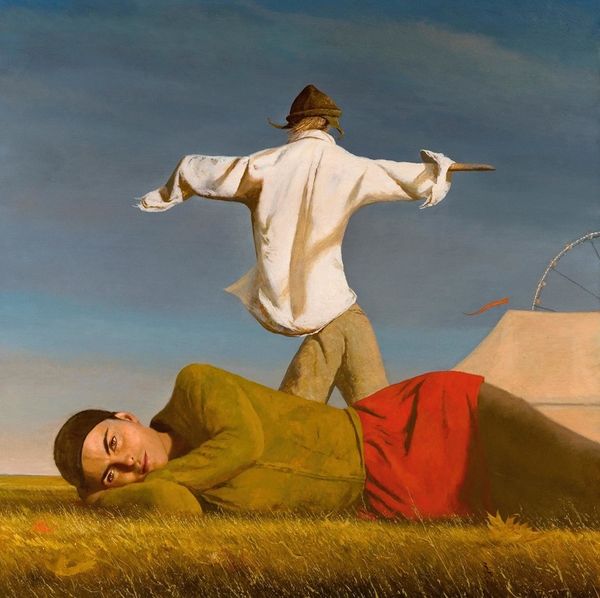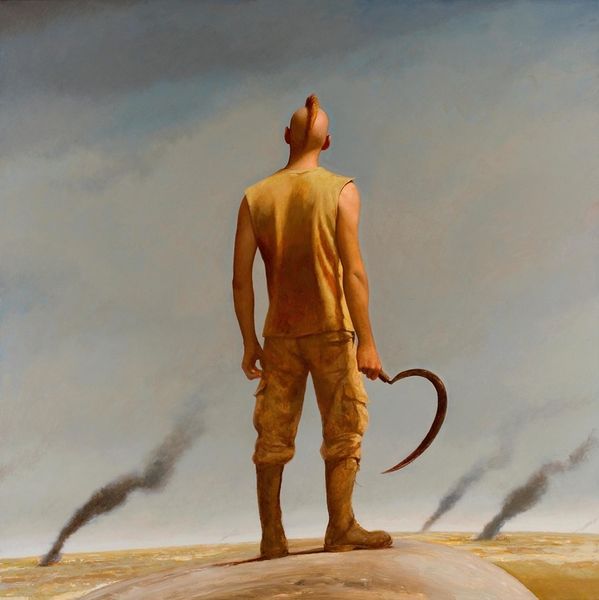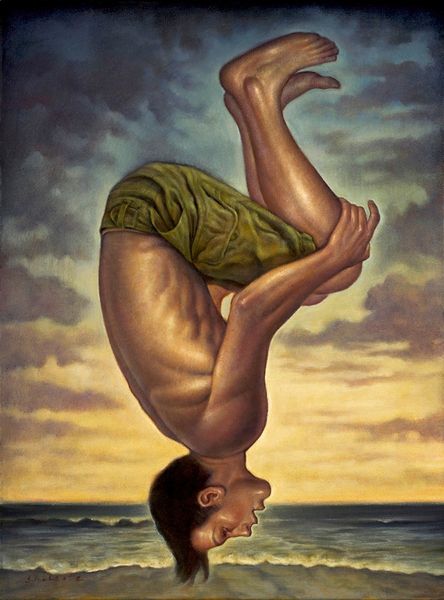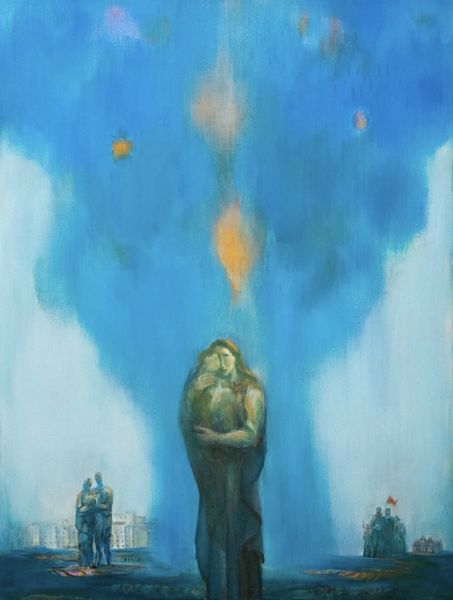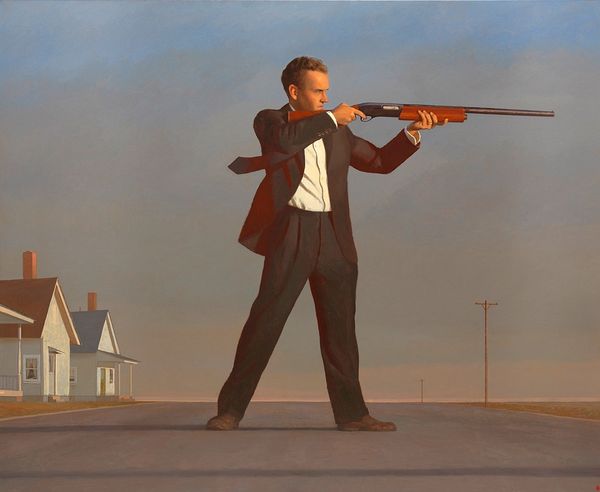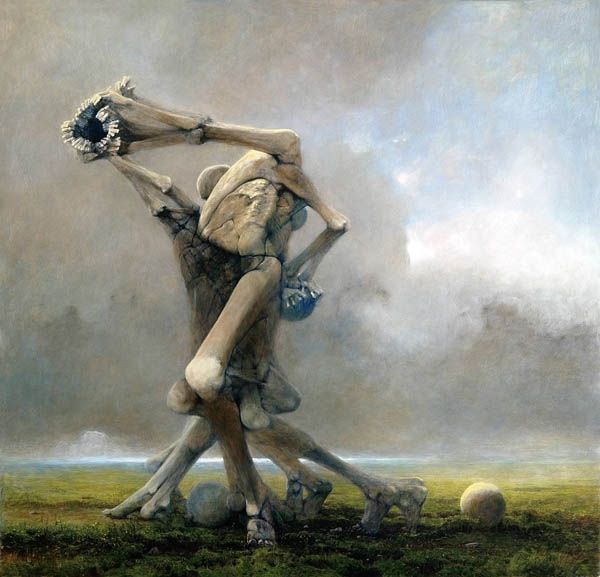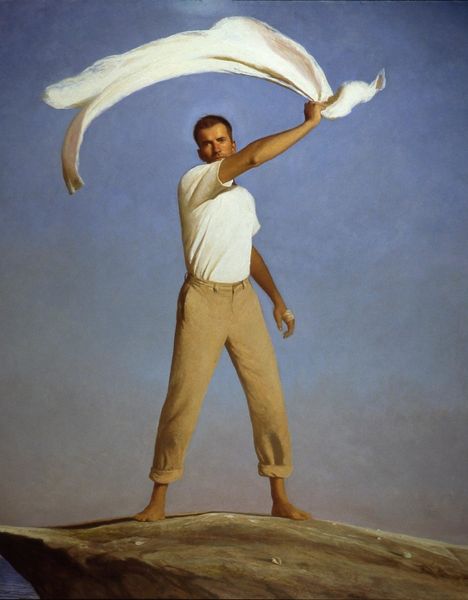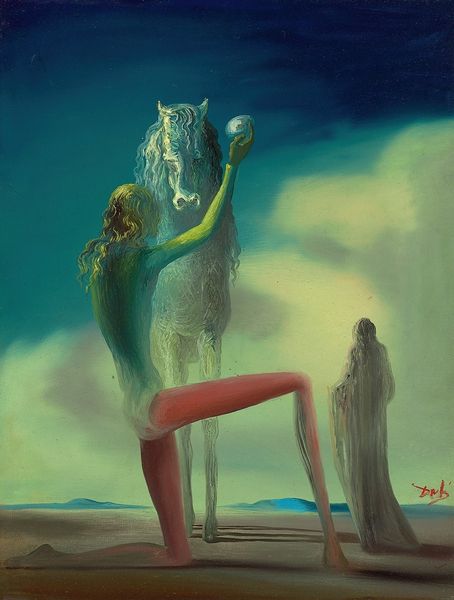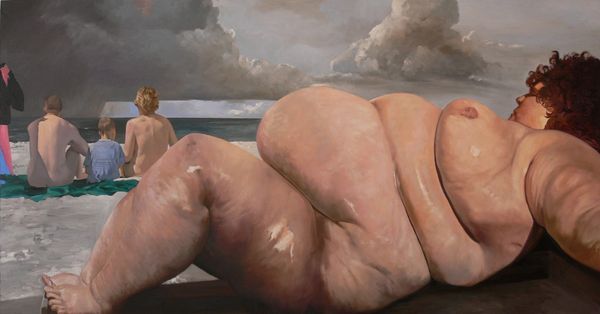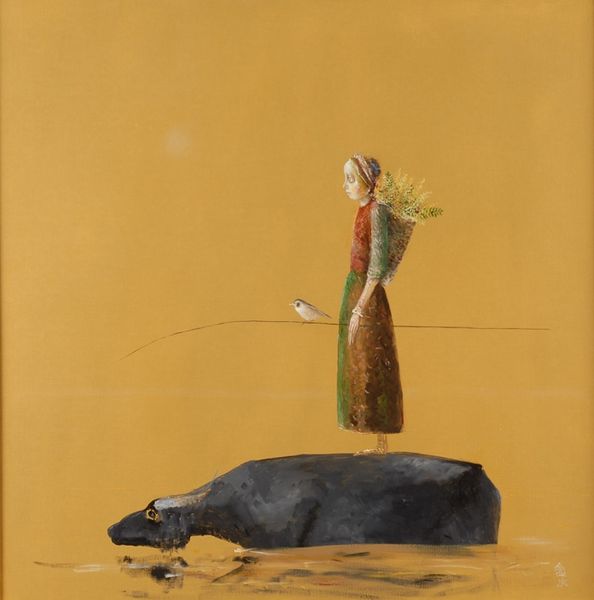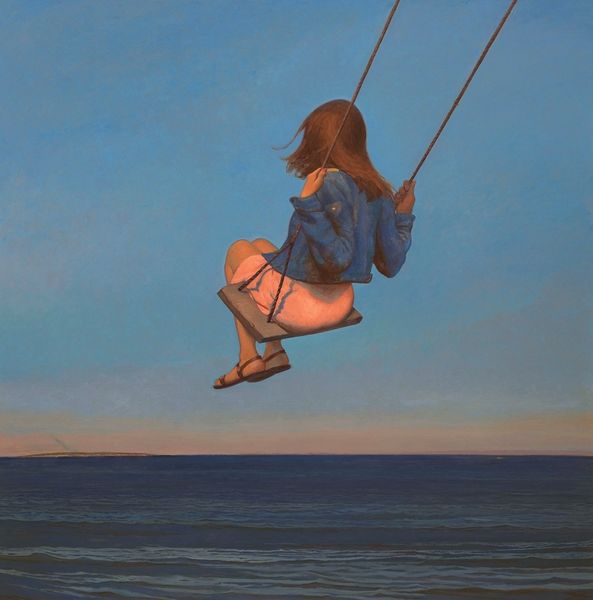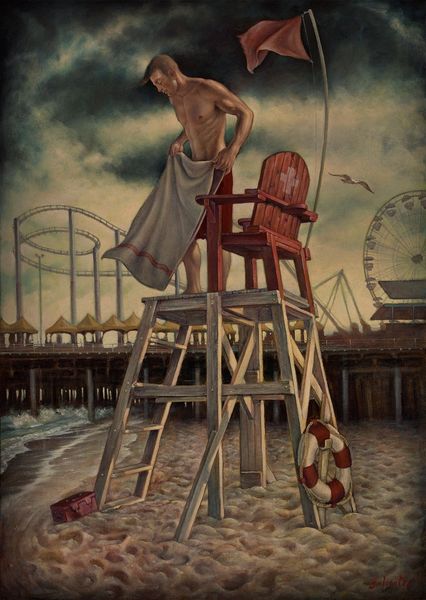
painting, plein-air, acrylic-paint
#
portrait
#
figurative
#
contemporary
#
painting
#
plein-air
#
landscape
#
acrylic-paint
#
figuration
#
portrait art
Copyright: Modern Artists: Artvee
Editor: We're looking at Bo Bartlett's 2019 painting, "Draw Out the Child," an acrylic plein-air portrait. There’s something very arresting about the stark, almost surreal scene. What can you tell me about it? Curator: Let’s think about what acrylic plein-air implies. Bartlett chooses a distinctly modern, manufactured medium to capture what appears to be an unscripted, outdoor moment. How does this clash or collaborate? The choice reflects a tension inherent in contemporary art, and perhaps social existence too. Acrylic is itself a mass-produced commodity – linking high art and a more accessible making. Editor: So, you're focusing on the materials used? I guess I was drawn more to the subjects – a man holding what appears to be either a child or a small adult. Curator: Exactly. How does Bartlett utilize those relationships in materials and labor? Consider, this "plein-air" execution still requires immense labor, doesn't it? Is the accessibility a democratization of art making or simply another market force? Are viewers implicated through its scale? How are the class issues handled in Bartlett’s painting here? The clothing materials are also highly generic… why? Editor: I hadn't considered how the everyday quality of acrylic paint challenges elitist concepts of traditional artistry, especially with something as timeless-seeming as a landscape portrait. Does his choice imply some sort of societal critique? Curator: Perhaps a gentle one. The "child" element of the title suggests vulnerability and intimacy, but within this context, we might explore themes of dependence, power dynamics, or even environmental concerns. Can we see the individual relationships only by discussing its relationship to the system, including manufacturing? Editor: It makes me reconsider how much the simple materials contribute to a larger, more complex discussion about society and how we all fit into it. Curator: Indeed. By acknowledging the means of production and cultural context, our reading of the piece can become incredibly deeper, beyond mere aesthetics.
Comments
No comments
Be the first to comment and join the conversation on the ultimate creative platform.
